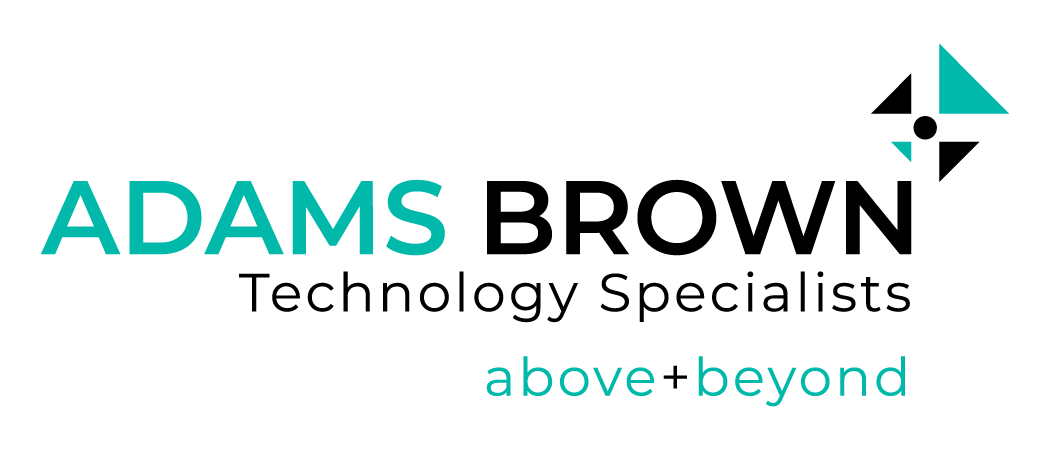The Real Impact of Dental AI
A Candid Conversation Between Two Industry Experts
Interview by Tammie Powers, Dental Practice Advisor at Adams Brown Technology Specialists
Guest: Adrian Lefler, Dental AI Strategist and CEO of My Social Practice
In an era where dental AI is transforming how practices operate, communicate and grow, we sat down with dental marketing authority Adrian Lefler to explore the practical implications of artificial intelligence in dentistry. Tammie Powers dives deep into how dental AI is reshaping practice management, patient communication and the future of dental care delivery.
Tammie Powers: I talk with practice owners every week who are exhausted—short-staffed, missing calls, buried in repetitive admin tasks. They keep hearing about “dental AI,” but they’re skeptical. Adrian, what’s the real deal? How is AI actually showing up in day-to-day practice life?
Adrian Lefler: That skepticism is healthy. Most dentists I know didn’t get into this profession to become tech experimenters. But here’s the reality: practices are bleeding time and money on things that can be automated without losing the human touch.
Dental AI isn’t about replacing your staff. It’s about protecting your team’s time and stopping revenue from falling through the cracks. The practices that are using AI well aren’t “tech forward.” They’re just tired of missing opportunities.
How Much Time Are You Losing on Tasks a Bot Could Handle?
Tammie: What are the actual use cases where you see AI making a difference?
Adrian: Appointment confirmations, insurance eligibility checks, patient FAQs, missed call handling, after-hours response and outbound hygiene recall. I’ll give you a real example: a Denver-based practice installed an AI phone receptionist that answered overflow and after-hours calls. Within the first two months, they brought in over $25,000 in additional scheduled treatment simply because the calls were being picked up and routed correctly.
Tammie: That’s not a tech win. That’s a business operations win.
Adrian: Exactly. AI isn’t there to sound cool. It’s there to prevent your front desk from spending two hours a day answering “What time do you close?” or “Do you take Aetna?” Meanwhile, patients with real treatment needs are bouncing to another provider who picks up the phone.
“We’re Not Ready for That” — Or Are You?
Tammie: I’ve heard the hesitation: “We’re not ready for that kind of tech.” But I always ask, “Are you missing calls?” Because if you are, you’re already losing revenue.
Adrian: Right. You don’t need to be “techy” to use AI in your practice. You need to be honest about what’s breaking down in your systems. If you’re short-staffed, missing calls or spending a fortune training new front office hires every few months, then you’re more ready than you think.
Start small. A good first step is an AI webchat on your website that can answer FAQs and book appointments. Then move to phone systems. Don’t get caught up in shiny features. Get clear on your biggest pain point and solve that first.
Does It Actually Sound Human?
Tammie: Let’s address the elephant in the room. Do patients hate talking to bots?
Adrian: I prefer to call them AI agents. The word bots has a weird context. It conjures up an image of some robotic hardware that feels super impersonal. But to answer your questions, some patients do and some don’t.
After looking at the stats on about 10 thousand calls we’ve found that about 10-15% of the calls are of people who recognize that they’re talking to AI and they say things like “representative” or “customer service” hoping to skip past the system and get to a real person. But that’s because all of their past customer service experience has been with these super impersonal decision tree type systems. Kind of like the software that runs your cell phone company. You know what I’m talking about. You call and immediately recognize that you’re talking to a computer; that wouldn’t be bad but you end up getting stuck in a decision tree where the computer gives you a set of predetermined options and it never offers you an option that will answer your question. So, you try and get past it by asking for a representative. AI agents aren’t like that. They understand context, sentiment and can have natural conversations.
I think over the next couple of years patients are going to get used to talking to AI agents. And the agents are going to get so good the patient will rarely need to talk to a human.
Patients like it when AI works. If the choice is between getting help instantly from a smart AI or leaving a voicemail that nobody returns, they’ll take the AI every time.
Tammie: I’ve seen that too. If the patient has a billing question or wants to check insurance coverage, and they can get an answer in 30 seconds without being transferred three times, they’re happy.
AI Isn’t Magic—It’s Training
Tammie: What are the biggest mistakes practices make when jumping into AI?
Adrian: Three things:
Well, first of all, trying to hide its AI. Just be transparent. People are smarter than you think.
Secondly, over-automating. Just because you can automate something doesn’t mean you should. Post-op calls? Still a human job.
And the third, skipping the training. You don’t want to feed your AI random call recordings. You want to train it on your best conversations—how your team handles objections, explains treatment costs and builds trust. That requires customization.
Tammie: So it’s not plug-and-play. It needs to be built around the personality and systems of the practice.
Adrian: Exactly. One-size-fits-all AI doesn’t cut it in dentistry. The AI receptionist for a high-volume ortho practice should act differently than one for a boutique cosmetic office.
What’s the ROI?
Tammie: Let’s talk numbers. What are practices really seeing in terms of ROI?
Adrian: Most see a return in the first 30 to 60 days. I’ve worked with solo docs who captured an extra $5,000 – $8,000 a month in treatment just from answering calls they used to miss. Larger practices with more volume are seeing $50K to $75K swings when they fully implement AI on phones, webchat, and combine that with online scheduling.
Tammie: And those numbers don’t account for the reduced stress and better team morale when the front office isn’t overwhelmed.
Security and Compliance Aren’t Optional
Tammie: What should practice owners be asking to make sure their AI solutions are safe and compliant?
Adrian: First, make sure the provider is HIPAA-compliant and gives you a signed BAA (Business Associate Agreement). Then ask about encryption, SOC 2 certification and regular security audits. If the company can’t explain their security protocols clearly, that’s a red flag.
Tammie: You don’t want to trade convenience for a lawsuit. That’s why we always review vendor compliance when our clients bring on new systems.
Final Thoughts: What AI Should and Shouldn’t Do for your Practice
Tammie: Last question: What’s your advice to practice owners who want to stay ahead of the curve but not lose what makes their practice special?
Adrian: Use AI to eliminate friction, not connection. If your brand is friendly and warm, make sure your AI reflects that. If you’re sleek and tech-driven, let it show.
But always keep humans at the center of care. AI is a tool, not a strategy. Your strategy is to serve patients better than anyone else. AI just gives you more time and capacity to do it.
Want to learn more about implementing dental AI in your practice?
Connect with Tammie Powers at Adams Brown Technology Specialists for a no-pressure consult about where AI can fit into your existing systems and budget.
About Adrian Lefler: Adrian Lefler is a recognized dental marketing authority and thought leader in dental AI implementation. With over 15 years of experience helping 7,000+ practices grow, Adrian and his team combine practical strategy with cutting-edge technology insights to empower dental teams nationwide.
Frequently Asked Questions About Dental AI for Practices
How much does it cost to implement a dental AI receptionist?
At Adams Brown Technology Specialists, we typically see monthly costs range from $300 to $1,500, depending on features, call volume and integration complexity. For most solo or small group practices, solutions in the $400–$700/month range meet their operational needs.
We encourage clients to evaluate cost not just as an expense, but in terms of recovered revenue from previously missed calls, reduced need for overtime and improved staff efficiency. Many practices recoup their investment within the first 30 to 60 days.
What features matter most when choosing a dental AI system?
Key features to prioritize include:
- HIPAA compliance with signed Business Associate Agreements (BAAs)
- Seamless integration with your current practice management software
- Customizable call flows and conversation logic tailored to your procedures and hours
- Urgency detection for emergency calls
- Multi-language support
- Reporting dashboards to track patient interactions and system performance
We also recommend choosing vendors that offer onboarding support and practice-specific configuration, not just off-the-shelf templates.
How can we make sure our AI system stays HIPAA compliant as it evolves?
Adams Brown Technology Specialists advises practices to take a proactive approach to AI governance. This includes:
- Requiring end-to-end encryption of all patient data
- Reviewing audit logs regularly
- Restricting AI access to specific data fields
- Establishing clear boundaries on what AI agents can discuss (e.g., no detailed treatment advice)
- Scheduling periodic reviews of AI conversations to ensure compliance and tone
HIPAA compliance isn’t a one-time checkbox. It requires ongoing oversight and vendor transparency.
What type of training should staff receive before using a dental AI system?
Dental AI changes workflows—and success depends on staff buy-in. We recommend a three-part training plan:
- System setup and dashboard training so your team knows how to manage the AI day-to-day
- Role redefinition sessions to help clarify new responsibilities and workflows
- Scenario-based coaching to prepare for real-life handoffs when a conversation needs human intervention
Most practices that dedicate just 2-5 hours to structured onboarding see smoother implementation and faster ROI.
How do AI receptionists handle emergency calls differently?
AI systems can identify urgent dental needs based on tone and keywords like “pain,” “swelling” or “bleeding.” A well-trained system doesn’t just log the call, it prioritizes it, offers emergency time slots or initiates on-call escalation protocols automatically.
Adams Brown Technology Specialists works with practices to build and regularly update their AI’s emergency logic, ensuring the system routes urgent calls to the right human—fast.

